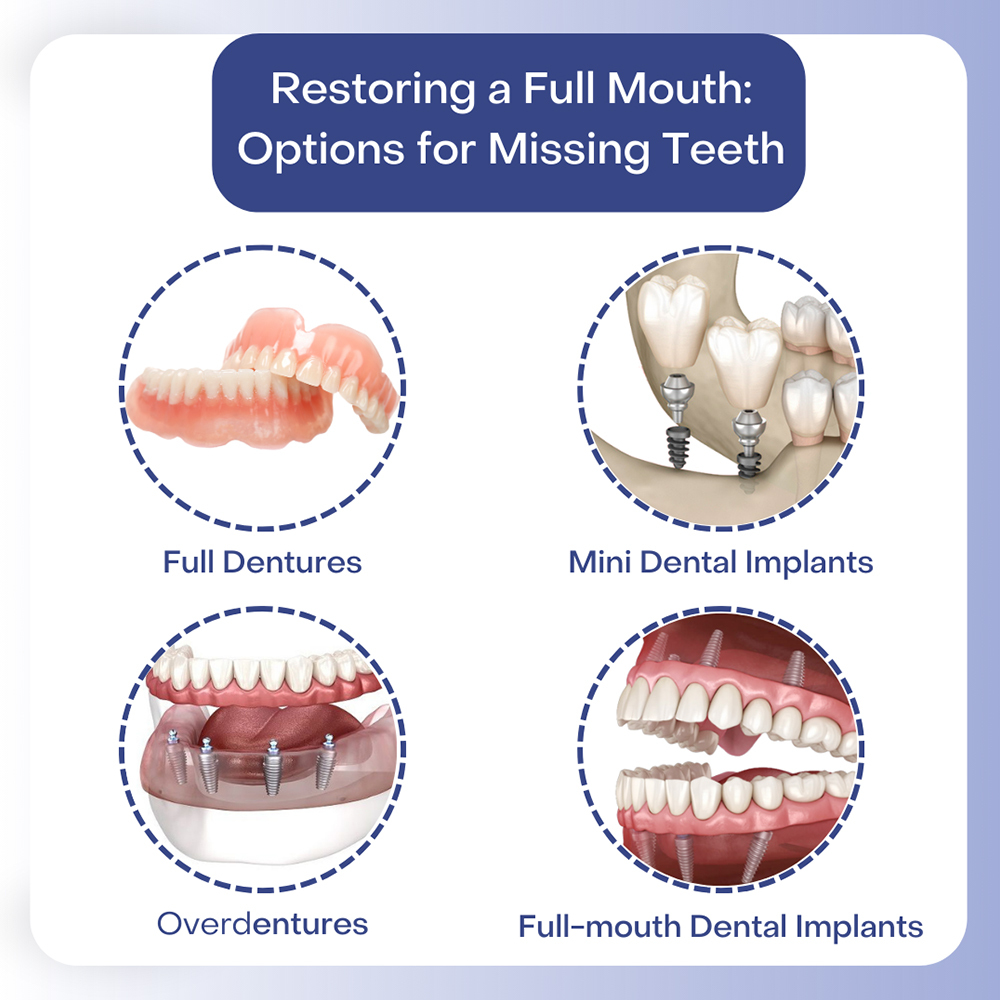The 45-Second Trick For Dental Sense
Wiki Article
An Unbiased View of Dental Sense
Table of ContentsDental Sense Things To Know Before You Get ThisDental Sense for DummiesThe 5-Second Trick For Dental SenseHow Dental Sense can Save You Time, Stress, and Money.
are clinical tools surgically implanted into the jaw to restore an individual's capacity to chew or their appearance. They provide assistance for fabricated (phony) teeth, such as crowns, bridges, or dentures. When a tooth is lost because of injury or illness, a person can experience problems such as rapid bone loss, malfunctioning speech, or modifications to eating patterns that result in pain.Oral implant systems contain an oral implant body and oral implant abutment and might likewise include a joint fixation screw. Root canal procedure. The oral implant body is surgically put in the jawbone instead of the tooth's root. The oral implant abutment is normally affixed to the implant body by the abutment addiction screw and extends through gum tissues into the mouth to support the connected synthetic teeth
(https://disqus.com/by/dentalsense1/about/)Structure of The Dental Implant System selecting oral implants, speak to your dental company regarding the potential benefits and threats, and whether you are a candidate for the procedure. Points to think about: Your overall health is an essential variable in establishing whether you are an excellent prospect for dental implants, exactly how long it will take to heal, and how much time the dental implant may stay in place.
Smoking cigarettes might influence the healing process and decrease the long-term success of the implant. The healing procedure for the dental implant body may take several months or longer, during which time you generally have a short-term abutment instead of the tooth. the dental implant treatment: Very carefully comply with the dental health directions provided to you by your oral copyright.
The Ultimate Guide To Dental Sense
Implant failing can cause the demand for one more operation to take care of or replace the dental implant system. Restores the ability to chew Recovers cosmetic look Assists maintain the jawbone from diminishing because of bone loss Protects the health and wellness of the surrounding bone and gum tissues Aids maintain adjacent (close-by) teeth steady Enhances quality of life Damage to bordering natural teeth during implant positioning Injury to the surrounding cells during surgery, such as sinus opening Injury throughout surgical procedure (for example, crack of bordering jawbone) Poor function, such as feeling like the teeth do not bite with each other generally A feeling that the tooth hangs or turning in position resulting from an abutment screw loosening up Implant body failure (looseness of the implant body) as a result of systemic infection, which might be extra likely in patients with unchecked diabetes as a result of neighborhood infection in bone and gums sustaining the dental implant body as a result of postponed healing, which might be most likely in individuals that smoke Problem cleansing the gum tissues around the dental implant, resulting in bad dental health Neglected periodontal illness Post-surgical tingling as a result of nerve impingement or damage Always alert wellness care providers and imaging technicians that you have dental implants before any kind of magnetic vibration imaging (MRI) or x-ray treatments.FDA is not familiar with any type of adverse occasions reported for MRI or x-ray treatments with oral implants. Oral implants systems are typically made from materials that comply with international agreement requirements of the International Organization for Standardization (ISO) or ASTM International. These criteria have information of what makes a secure material.

A dental implant is a framework that replaces a missing tooth. With screw-like devices, the surgeon inserts an implant right into the jawbone, and it serves as an anchor for a synthetic tooth, called a crown. A gadget called a joint connects the man-made tooth to the oral implant. The crown is customized to fit the person's mouth and match the color of their teeth.
How Dental Sense can Save You Time, Stress, and Money.
Some people are not eligible for dental implant surgery. It is for dental specialists to operate on individuals with: intense illnessuncontrollable metabolic diseasebone or soft tissue disease or infectionIf these problems are dealt with, an individual can have the surgical treatment. In, oral specialists avoid running on people with: If individuals with any of the above undergo dental implant surgical treatment, there is a higher risk of the dental implant failing.
Dental implant surgery is an individualized procedure. It's not the exact same for everybody. However the following gives a general review of what you can anticipate your dental practitioner, oral cosmetic surgeon, periodontist or prosthodontist to do: Put the dental implant operatively. Offer you time to heal. Attach the message and final crown, bridge or denture.
Next, your doctor will very carefully put the dental implant into your jaw. Ultimately, your surgeon will rearrange your gum tissues and shut the cut with stitches. If your dental implant is near the front of your mouth, your dental expert will certainly make a temporary tooth for you to put on up until you recover. In this way, you will not have a space in your smile while you recover.
Little Known Facts About Dental Sense.
Your copyright can tell you what to anticipate in your situation. During the healing stage, your jawbone needs to fuse to the dental implant. This process, called osseointegration, is essential for stability and long-lasting success. This process can take anywhere from 3 to nine months. Sometimes, it might take much longer.Once your implant heals, your dentist can affix the joint (tiny adapter article) and your final restoration (crown, bridge or denture). This generally takes about one hour to finish and may require a second small surgery. You shouldn't really feel any type of discomfort during your oral implant procedure because your provider will certainly use drug to numb your gum tissues.
Report this wiki page